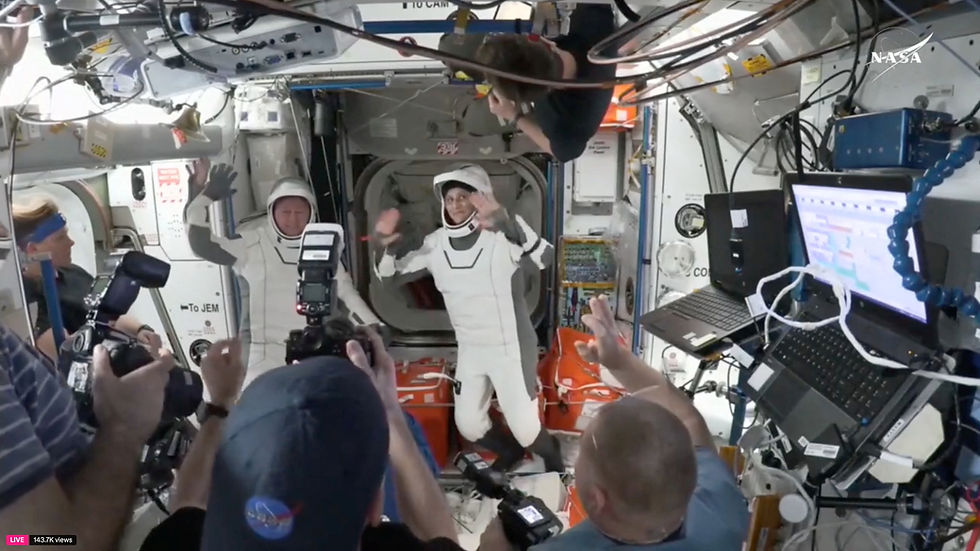Factbox-Details of the humanitarian crisis in Gaza
- News Agency
- Jun 8, 2024
- 3 min read

The Gaza Strip is suffering an unfolding humanitarian catastrophe nearly eight months since Israel launched a devastating offensive in response to the Oct. 7 Hamas-led attacks that killed 1,200 people in Israel.
More than 36,000 people have been killed in the Israeli offensive which has laid to waste much of the Gaza Strip, according to the Gaza Health Ministry, with thousands more dead feared lost under the rubble.
Here are some details of the humanitarian situation:
DISPLACEMENT, SHELTER
The Israeli offensive against the southern city of Rafah since early May has uprooted around 1 million displaced people, many of whom had already fled violence several times before.
Many of those people have been forced into empty tracts of land or partially bombed buildings and lack water and hygiene facilities.
An Israeli airstrike triggered a blaze that killed 45 people in a tent camp in Rafah on May 26, prompting an outcry from global leaders. Israel said it had targeted two senior Hamas operatives and had not intended to cause civilian casualties.
FAMINE RISKS
The United Nations, which has repeatedly warned of famine in Gaza, said that the amount of humanitarian aid entering the enclave has dropped by two-thirds since the Rafah operation began.
The Rafah crossing from Egypt has been shut for weeks, with a long line of trucks building up and some food rotting in the sun. A mere trickle of aid supplies are entering via the other southern crossing of Kerem Shalom and the World Food Programme has noted a deterioration in hunger in the centre and south.
However, supplies to northern Gaza, previously described by the agency chief Cindy McCain as being in "full blown famine", have improved due to better access through northern crossings, WFP said. Israel has lifted a ban on food sales to Gaza from Israel to the occupied West Bank.
There has not been a formal declaration of famine in Gaza by U.N. agencies: such a declaration hinges on a set of criteria measuring the extent of hunger suffered by a population and is assessed by the Integrated Food Security Phase Classification (IPC), an initiative of more than a dozen U.N. agencies, regional bodies and aid groups.
Data from the United Nations Palestinian refugee agency showed that 10.4% of 17,757 children screened between January-May were found to have some form of malnutrition, with 1.7% suffering from severe acute malnutrition. Some bakeries have had to close due to hostilities and lack of cooking gas, with only 11 out of 17 previously operating now functional.
PRESSURE ON ISRAEL FOR MORE AID
Israel, which imposed a complete siege on Gaza in the early days of the war, has faced growing international pressure including from its ally the United States to let in more aid.
The United States opened a military-built pier off Gaza's coast in mid-May to help speed up humanitarian deliveries into Gaza but it had to be temporarily removed after part of the structure broke off, the Pentagon said.
Some supplies entered Gaza via the West Erez crossing in northern Gaza which opened in May and via Gate 96 - an entry point to northern Gaza opened by the Israeli military in March - U.N. data showed.
Within Gaza, the U.N. humanitarian office said just under half of its humanitarian missions in north and south Gaza were assisted by Israeli authorities in May while the others were denied, impeded or cancelled.
Israel blames the U.N. for distribution problems within the strip and says it is continuing efforts to facilitate humanitarian aid.
DISEASE AND SANITATION
Gaza's health sector has been decimated by the conflict, with many countries denouncing Israel's actions at a World Health Organization (WHO) meeting on May 29.
The WHO says just 14 of Gaza's 36 hospitals are still functioning and that the Rafah operation has blocked patient transfers and all but cut off medical supplies into the enclave.
Among the seriously ill patients blocked inside the enclave is a 10-year-old boy with cancer.
Aid agencies are warning of growing health risks from sewage overflow and lack of access to toilets. Some families are making makeshift latrines and in other areas sewage flows through the streets, aid workers say.
Source: Reuters









.png)








Comments